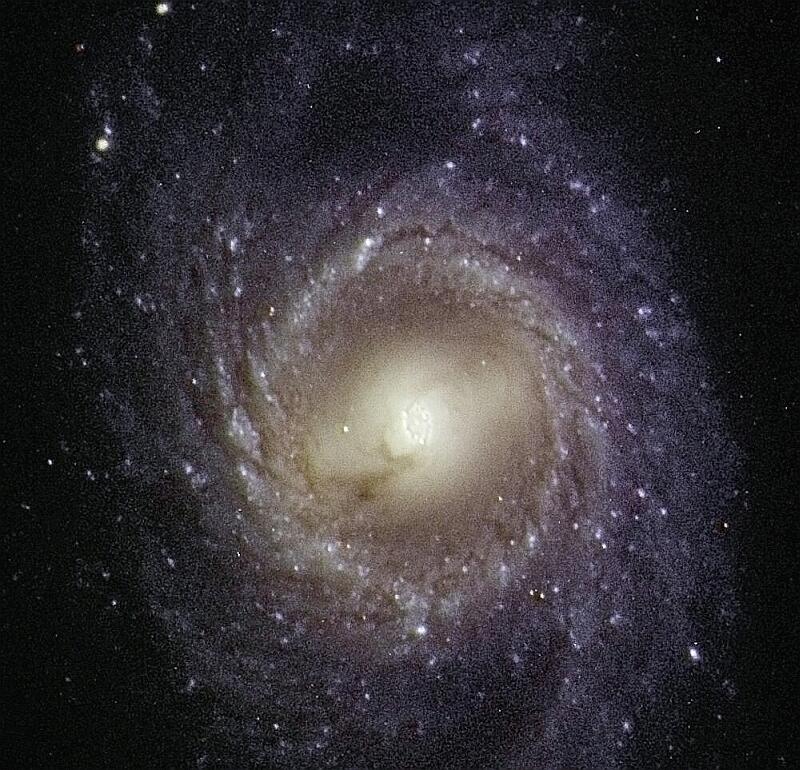M95 is a beautiful barred spiral galaxy - one of my favourite kinds of galaxy at the moment. The below image of it was taken by astronomers using the William Herschel telescope, and shows the bar across the centre, with a ring of star formation surrounding it. Barred galaxies quite commonly will have rings around the outer edges of the bar, and M95 has been called a "typical ringed galaxy" (by the famous astronomer Alan Sandage).
 |
| M95. Credit: Johan Knapen (ING) and Nik Szymanek. |
Here's M95 in the SDSS three colour images we use in Galaxy Zoo.
| M95. Credit: SDSS |
There is a stunning image of M95 taken by the Spitzer IR telescope as part of the SINGS survey of nearby galaxies (below). This image in red shows the interstellar dust around regions of intense star formation in the ring (link to Spitzer description)
 |
| M95 in IR. Credit: Spitzer/SINGS |
Historically in astronomy M95 is important as a member of the set of galaxies using in the Hubble Key Project to measure the rate of the expansion of the Universe. These measurements give it a distances of about 30 million light years away.
NED page on M95
Wikipedia article on M95
The Bad Astronomer has a great post with some images of the galaxy including the supernova, and even a movie of it going off.
ReplyDeletehttp://blogs.discovermagazine.com/badastronomy/2012/03/20/supernova-2012aw-the-pictures/
Just noticed this was the galaxy I used to illustrate what an SBb looks like (via Ron Buta) in my Galaxy Zoo Hubble Tuning Fork post too. :)
ReplyDelete